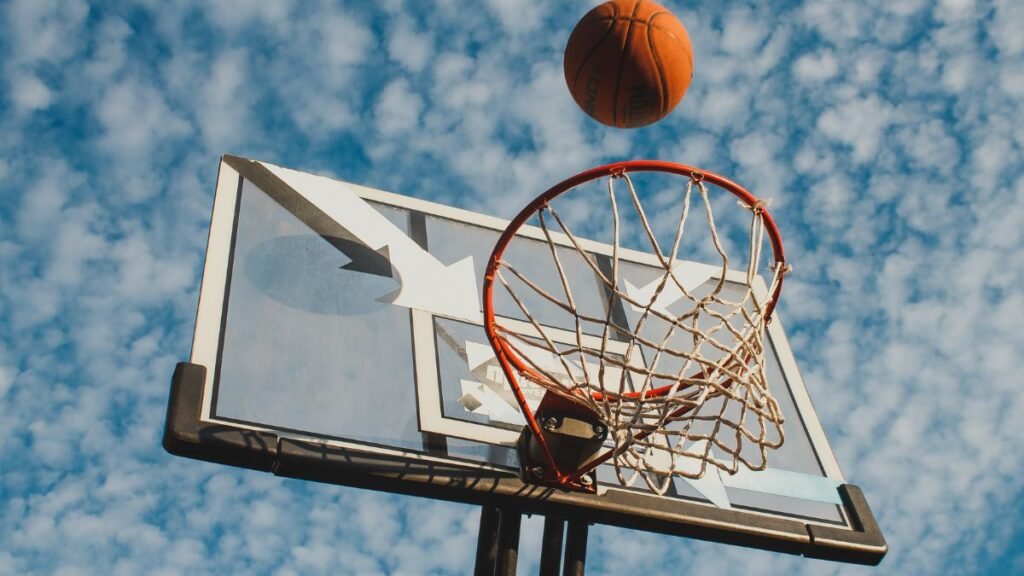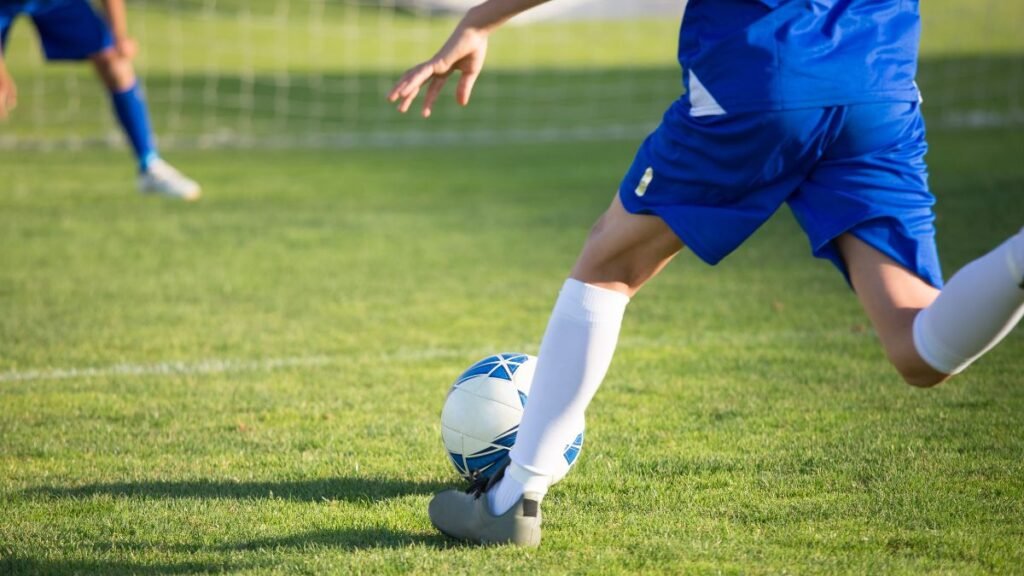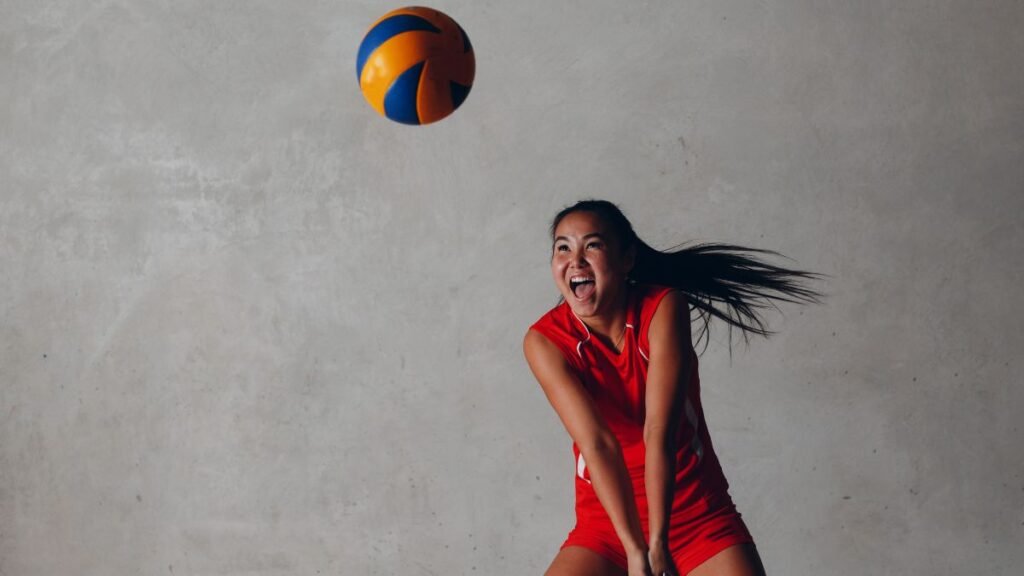Introduction
Have you ever wondered why certain team sports activities bring people together like nothing else? From the bustling streets of São Paulo to the sandy beaches of Rio de Janeiro, Brazil has a unique relationship with group activities that require coordination and teamwork.
These communal experiences foster a sense of belonging and unity among participants, transcending individual differences and promoting social bonds. In Brazil, where vibrant culture and diversity thrive, engaging in team sports not only serves as a source of entertainment but also acts as a vital avenue for building friendships and strengthening community ties.

This article explores four exciting options: association football, water polo, roller derby, and sepak takraw. Each has its own set of rules and cultural significance. Brazil, known for its five FIFA World Cup wins, is a global leader in football. But the country also embraces lesser-known activities that showcase diversity and skill.
Engaging in these activities offers more than just fun. They improve fitness, develop leadership skills, and even boost academic performance. Whether you’re a fan of mainstream games or niche pursuits, there’s something for everyone.
Key Takeaways
- Team activities require coordinated efforts with two or more players.
- Brazil has a strong cultural connection to athletic group pursuits.
- Four featured options include football, water polo, roller derby, and sepak takraw.
- These activities improve fitness, leadership, and academic performance.
- Brazil is a five-time FIFA World Cup champion.
Introduction to Team Sports
From ancient traditions to modern games, group activities have shaped cultures worldwide. These activities, often referred to as team sports, require at least two players per side, fostering collaboration and shared goals. Whether it’s basketball or synchronized swimming, the essence lies in working together.
Some activities, like relay races and curling, blur the lines between individual and group pursuits. These borderline cases still emphasize teamwork, even if the structure differs. For example, relay races rely on seamless transitions, while curling demands strategic coordination.
Engaging in these activities offers more than physical benefits. Studies show participants have a 30% higher college graduation rate compared to non-participants. The skills learned—leadership, time management, and accountability—translate into academic and professional success.
Organizational structures vary across different codes. Some, like basketball, have fixed team sizes, while others allow substitutions. This flexibility ensures inclusivity and adaptability, making these activities accessible to millions.
Beyond physical and academic benefits, group activities enhance spiritual health. Shared values and accountability create a sense of belonging and purpose. This is evident in Brazil, where team sports are deeply ingrained in the culture, supported by infrastructure that caters to 42 million regular participants.
Emerging hybrid activities, like underwater hockey, showcase the evolving nature of these pursuits. Historical games like Cuju and Kemari remind us of their timeless appeal. Whether ancient or modern, the essence remains the same: unity through collaboration.
1. Association Football: The Global Phenomenon
Association football has captivated millions worldwide, becoming a unifying force across cultures. Known simply as football in most countries, this ball game is played by over 200 national FIFA associations. Its universal appeal lies in its simplicity and the excitement it generates on and off the pitch.
The sport transcends geographical boundaries, drawing in fans from diverse backgrounds who come together to celebrate their shared passion for the sport. Whether played in a professional stadium or a local park, football fosters a sense of community and belonging among players and supporters alike, creating lifelong memories and connections. This emotional bond is further amplified during major tournaments, where nations unite in support of their teams, showcasing the power of sport to inspire and unite people worldwide.

Brazil stands as a powerhouse in this sport, having won a record five FIFA World Cup titles. The country’s passion for football is unmatched, with the industry contributing 4.6% to its GDP. From the iconic Maracanã Stadium to the rise of futsal in urban centers, football is deeply embedded in Brazilian culture.
Rules of Association Football
Association football is played between two teams of 11 players each. The game lasts 90 minutes, divided into two halves. Key rules include the offside rule, which has undergone modifications following VAR implementation to ensure fairness and clarity in decision-making.
This rule is crucial as it prevents attacking players from gaining an unfair advantage by positioning themselves too close to the opponent’s goal line before the ball is played to them, thereby promoting strategic play and teamwork.
Professional pitches must meet specific dimensions to ensure uniformity across matches. The positions on the field, such as forwards, midfielders, and defenders, require distinct skills and strategies. For instance, forwards are typically tasked with scoring goals and creating offensive plays, while midfielders serve as a link between defense and attack, often controlling the game’s tempo.
Defenders, on the other hand, focus on preventing the opposing team from scoring, showcasing the diverse skill sets necessary for each role. These elements make football a dynamic and engaging sport.
Popularity in Brazil
Brazil’s love for football is evident in its youth participation rates, with 32% of young Brazilians involved in organized leagues. This passion for the sport is not just a recent phenomenon; it has deep roots in Brazilian culture, where football is often seen as a rite of passage for many children.
The country’s iconic players, like Pelé and Neymar, have left an indelible mark on the game. Pelé, often referred to as the “King of Football,” revolutionized the sport with his extraordinary skills and charisma, inspiring generations of players and fans alike. Neymar, a contemporary superstar, continues to elevate Brazil’s status in international football, showcasing his talents on the world stage and contributing to the sport’s popularity.
Beach soccer, a variation of football, has also gained traction, especially in coastal regions, where the sandy shores provide a perfect backdrop for this energetic game. The sport’s cultural significance is further highlighted by the Maracanã Stadium, which seats 78,838 spectators and hosts some of the most thrilling matches.
This iconic venue has witnessed countless historic moments, including World Cup finals. It serves as a symbol of Brazil’s football heritage, attracting fans from around the globe to experience the electric atmosphere during major events.
| Player | Jersey Sales (Millions) | Years Active |
|---|---|---|
| Pelé | 8.5 | 1956-1977 |
| Neymar | 12.3 | 2009-Present |
Football in Brazil is more than just a sport; it’s a way of life. Its influence extends beyond the pitch, shaping the nation’s identity and economy.
2. Water Polo: The Aquatic Challenge
Water polo combines the intensity of swimming with the strategy of a ball game, making it a unique aquatic challenge. Since its Olympic debut in 1900, this sport has captivated audiences with its fast-paced action and physical demands. Played in deep pools, it requires six field players and one goalkeeper per team, each relying on endurance and precision.
The game is not only physically taxing but also mentally stimulating, as players must constantly assess their surroundings and anticipate their opponents’ moves. The combination of swimming skills, ball handling, and tactical awareness makes water polo a multifaceted sport that tests the limits of athleticism. Additionally, the camaraderie among teammates is crucial, as communication and trust play vital roles in executing successful plays and strategies.

Rules of Water Polo
The rules of water polo are designed to maintain fairness and excitement. Players must shoot within 30 seconds of gaining possession, a rule known as the shot clock. Exclusion fouls, which temporarily remove a player from the game, add a layer of strategy and complexity. Each player wears a cap with a unique number for easy identification, ensuring a smooth gameplay experience.
Pool depth requirements vary between men’s and women’s matches, with men’s pools typically deeper. Mandatory equipment includes caps and mouthguards, protecting players during intense moments. The sport’s similarity to underwater hockey lies in its reliance on underwater skills and teamwork.
Popularity in Brazil
Brazil has made significant strides in water polo, earning a silver medal at the 2023 Pan American Games. Coastal training centers in Recife provide athletes with ideal conditions for chlorine resistance training, a crucial aspect of the sport. Youth participation has grown by 12% annually, reflecting the country’s increasing interest in this aquatic discipline.
With its blend of physicality and strategy, water polo continues to inspire athletes and fans alike. Brazil’s achievements and growing infrastructure highlight its potential to become a global leader in this challenging sport.
3. Roller Derby: The Fast-Paced Thrill
Roller derby brings a unique blend of speed, strategy, and excitement to the world of competitive games. Governed by the Women’s Flat Track Derby Association (WFTDA), this sport has grown to include 463 leagues globally. Its introduction to Brazil in 2011, through an exhibition in Rio, sparked a wave of enthusiasm, leading to the formation of local leagues and events.
Rules of Roller Derby
Roller derby is played on a flat or banked track, with two teams of five players each. The jammer, identified by a star on their helmet, is the scorer who must lap opposing players to earn points. Blockers assist their jammer while hindering the opposing team’s progress. The game emphasizes strategy and teamwork, with strict rules prohibiting contact with the head or back.
Players use quad skates, which provide greater stability and control compared to inline variations. Protective gear, including helmets, knee pads, and mouthguards, is mandatory to ensure safety during intense gameplay. The investment in gear can range from $200 to $500, depending on quality and brand.
Popularity in Brazil
Brazil’s roller derby scene has seen remarkable growth since its introduction. The São Paulo Iron Skates league has emerged as a dominant force, winning multiple championships and inspiring a new generation of players. The sport is celebrated for its gender inclusivity, with leagues welcoming players of all genders and skill levels.
Attendance at roller derby events has increased by 200% since 2018, reflecting the sport’s growing appeal. The sport’s unique combination of athleticism and strategy continues to attract fans and participants alike, solidifying its place in Brazil’s vibrant sports culture.
4. Sepak Takraw: The Unique Sport
Sepak takraw, a dynamic blend of volleyball and soccer, offers a thrilling experience unlike any other. This sport, played with a rattan ball featuring 12-14 holes, combines agility, precision, and teamwork. Originating in Southeast Asia, it has gained global recognition for its fast-paced action and unique techniques.
Rules of Sepak Takraw
Sepak takraw is played by two teams of three players each, following ISTAF regulations. The game begins with a service rotation, where players take turns serving the ball over the net. Key positions include the regu, who specialize in setting up spikes, and the tekong, responsible for powerful serves.
The net height varies by gender, with men’s nets set at 1.52 meters and women’s at 1.42 meters. Official court dimensions are 13.4 meters long and 6.1 meters wide, ensuring a standardized playing field. Spike speeds in sepak takraw rival those in badminton, adding to the excitement.
Popularity in Brazil
In Brazil, sepak takraw has found a growing audience since the founding of the Brasília Takraw Association in 2019. The sport’s hybrid techniques, blending elements of volleyball and soccer, resonate with Brazilian athletes and fans. Southeast Asian cultural influences have also contributed to its adoption.
Currently, there are 15 registered clubs nationwide, with participation increasing steadily. The 2023 Asian Games introduced rule modifications, further boosting the sport’s appeal. Sepak takraw’s unique blend of athleticism and strategy continues to captivate audiences, making it a standout in Brazil’s diverse sports culture.
Team Sports in Brazil: A Cultural Perspective
Brazil’s passion for group activities goes beyond the field, shaping its culture and daily life. With 76% of Brazilians following sports on a weekly basis, these activities are deeply ingrained in the nation’s identity. From favela football academies to corporate sponsorships, the impact is profound and far-reaching.
Talk about volleyball in Brazil, as it has become a vital part of the nation’s sports culture, captivating millions with its fast-paced action and team spirit. The sport is played on various levels, from casual beach games to highly competitive leagues, showcasing the country’s love for athleticism and camaraderie.
Volleyball courts can be found in almost every coastal city, where locals and tourists alike engage in spirited matches, embodying the Brazilian ethos of fun and competition. Schools and community centers also promote volleyball as a means of physical education, fostering teamwork and discipline among youth.
Moreover, Brazil’s national teams have achieved significant success on the international stage, further igniting national pride and interest in the sport. This growing enthusiasm has led to increased investment in training facilities and youth programs, ensuring that volleyball continues to thrive in Brazil’s vibrant sports landscape.
Talk about judo and jiu-jitsu. Judo and jiu-jitsu are not just martial arts in Brazil; they are vital components of the nation’s sporting identity. Both disciplines emphasize discipline, respect, and self-improvement, attracting practitioners from diverse backgrounds.
Judo, with its roots in Japan, has found a passionate following in Brazil, where it is practiced in schools and community centers, teaching valuable life skills to young people. Jiujitsu, particularly Brazilian Jiujitsu, has gained international acclaim, with its focus on ground fighting techniques and leverage making it accessible to individuals of all sizes.
The growth of these martial arts has fostered a sense of community and belonging, with academies often serving as safe havens for young people, promoting both mental and physical well-being. Moreover, Brazilian athletes have excelled in international competitions, bringing home medals and elevating the country’s status in the global martial arts arena. This success has inspired many to take up these sports, further enriching Brazil’s diverse athletic culture.
Favela football academies play a crucial role in social development. These programs provide opportunities for underprivileged youth, fostering discipline and leadership. Many players who rise through these academies become role models, inspiring the next generation.
Corporate sponsorships from giants like Ambev and Petrobras have fueled the growth of team sports. These partnerships fund infrastructure, training programs, and events, ensuring accessibility for all. The collaboration between the private and public sectors has been a game-changer.
Olympic training centers in São Paulo are hubs of excellence. These facilities offer state-of-the-art equipment and coaching, preparing athletes for international competitions. The Army and Navy Academy also supports aspiring athletes through boarding programs.
- Urban participation rates are higher, but rural areas are catching up.
- Women’s league viewership has surged by 38%, reflecting growing inclusivity.
- Government initiatives, such as the Athlete Scholarship Program, provide financial support.
Samba schools, known for their Carnival parades, share organizational parallels with sports teams. Both require coordination, creativity, and community involvement. The logistics of Carnival events often mirror those of major sports tournaments.
Brazil’s love for football and basketball is unmatched, but the cultural significance of these activities extends beyond the game. They unite communities, inspire dreams, and shape the nation’s identity. Whether in urban centers or rural towns, team sports are a way of life in Brazil. Learn more Brazilian Judoka.
Conclusion
Brazil’s athletic culture is a vibrant mix of tradition and innovation, offering lessons in unity and resilience. While football remains a national obsession, emerging activities like water polo, sepak takraw, and the globally respected martial art of Jiu Jitsu showcase the country’s adaptability and passion for diverse pursuits.
Youth development programs play a pivotal role, with 67% of professional athletes starting their careers before the age of 12. Structured leagues not only nurture talent but also foster mental well-being, as participants report 22% higher life satisfaction.
For those inspired to join, resources such as the Army & Navy Academy (888-762-2338) and international training camps offer excellent opportunities. Whether you’re drawn to mainstream games or niche activities, Brazil’s athletic landscape offers something for everyone.
Explore these options today and discover how team sports can enrich your life, both on and off the field.
FAQ
What are the basic rules of association football?
Association football involves two teams of 11 players each. The objective is to score goals by getting the ball into the opponent’s net. Players can use any part of their body except their hands and arms, except for the goalkeeper, within their penalty area.
How is water polo played?
Water polo is played in a pool with two teams of seven players. The aim is to score goals by throwing the ball into the opponent’s net. Players must tread water throughout the game and can only handle the ball with one hand.
What makes roller derby unique?
Roller derby is a contact sport played on roller skates. Teams score points when their designated “jammer” laps members of the opposing team. It’s known for its fast pace, physicality, and distinctive culture.
What is sepak takraw, and how is it played?
Sepak takraw is a sport that combines elements of volleyball and soccer. Players use their feet, knees, chest, and head to hit a rattan ball over a net. The goal is to land the ball in the opponent’s court without allowing them to return it.
Why is association football so popular in Brazil?
Association football is deeply ingrained in Brazilian culture. It’s seen as a unifying force, with a rich history of legendary players like Pelé and Neymar. The sport is widely played and celebrated across the country.
Is water polo widely followed in Brazil?
Although not as popular as football, water polo is gaining a growing presence in Brazil. It’s often played in schools and clubs, with increasing interest in national and international competitions.
How has roller derby gained traction in Brazil?
Roller derby has been embraced by Brazilian communities for its inclusive and empowering nature. Local leagues and events have helped the sport gain visibility and attract new participants.
What role does sepak takraw play in Brazilian sports culture?
Sepak takraw is a niche sport in Brazil but has a dedicated following. Its unique blend of athleticism and skill appeals to enthusiasts seeking something distinct from mainstream sports.




